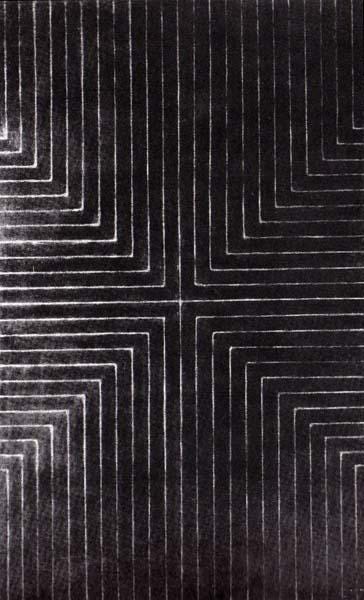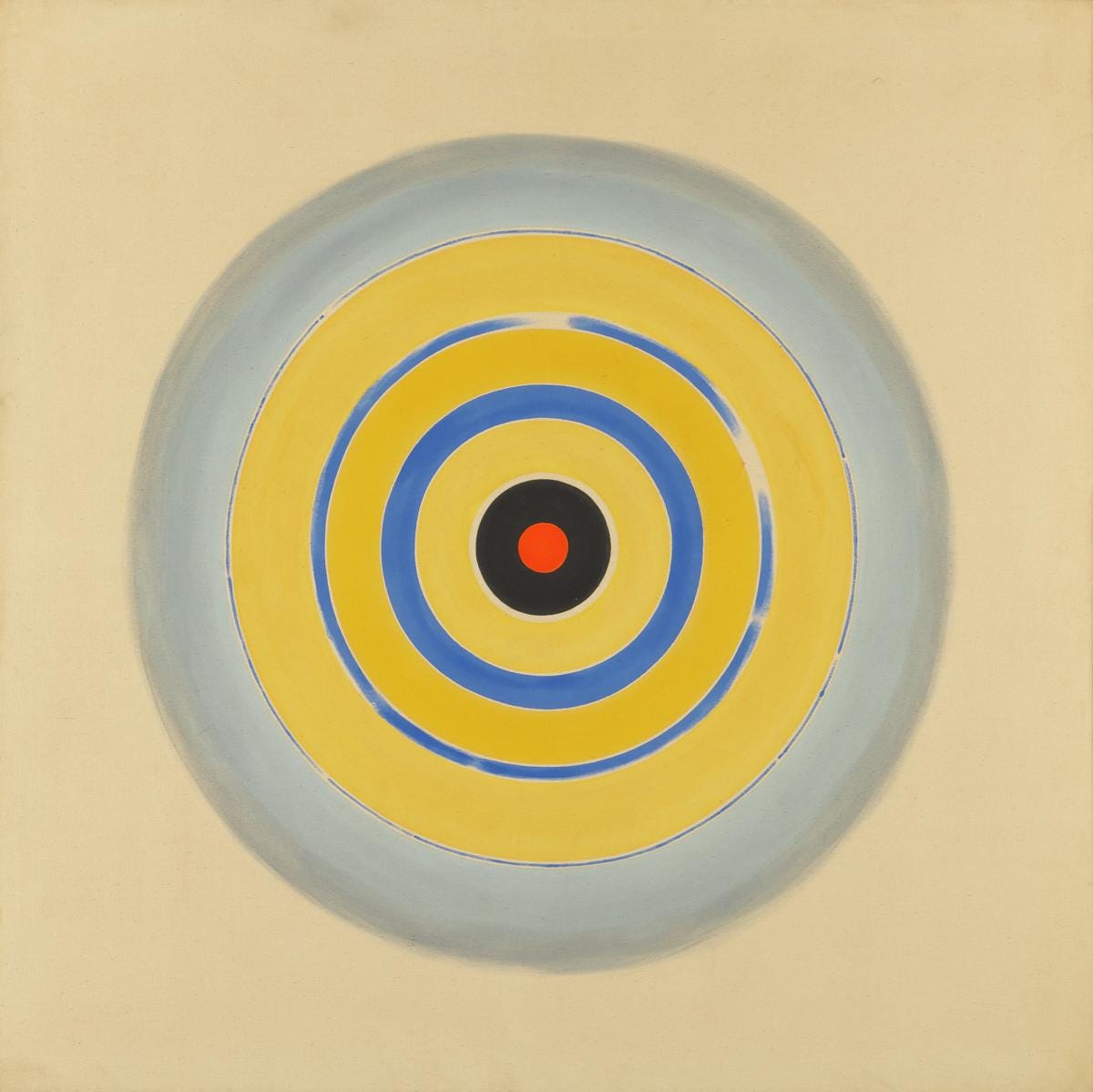Who would've thought that something that was once so cool, could become so square?
“Hotel Art” has long been short-hand for art that is dull and unassuming. This kind of art work merely fills space. The driving concept behind hotel decoration is to please the largest number of people as possible, while offending the least amount at the same time. Nothing should be idiosyncratic. This balancing act strives for the merely acceptable, resulting in the dull and insipid. For this reason hotel art has always had the reputation for being abysmal. When I was growing up, quintessential hotel art was the proverbial bowl of fruit which also happens to be the cliche short-hand for a banal painting. People today have found that the aesthetic offerings have changed. “Boutique” hotels are described as hip and stylish. But I would argue that this cool new decoration scheme is as uninspiring and boring as it always was.
Dull and unassuming are adjectives that could adequately describe the twentieth century art movement called Minimalism. Before the term Minimalism crystallized, the art that would bear that label was dubbed, among other things, “cool art.” It was called this because of its aloof, almost anti-expressionistic quality. In retrospect, it seems as reactionary to Abstract Expressionism as the similarly nonchalant Pop Art. But whereas Pop forwent the individual and idiosyncratic in favor of the external world, Minimalism blew away human vulnerability with the removal of any reference or relation to humanity.
What appeared as Minimalism's stripping of all content seemed to be the next and final course of advanced artistic development. Minimalism was the last stop of art’s progress from illusionistic and narrative to being totally pure and empty. As Frank Stella (pioneer of the movement) said “what you see is what you see”- and presumably nothing more. Minimalism boiled the whole thing down to its essentials, and removed all the extraneous noise. Minimalism was revolutionary, Minimalism was so cool.
Frank Stella, Die Fahne Hoch. 1959
This, of course, ignores the robust conceptual underpinnings behind the works. I know that these artists have unquestionable claims on some stratospheric intellectual territory. But let's put aside the hundreds of pages of theory that these artists have written both as a catalyst and as an explanation of their art, and consider how similar the work of these artists look to the uninitiated. Even Mondrian and Malevich had very different reasons for what they did but ultimately their paintings and that of their latter day colleagues (the Minimalists), all have a very similar look. And, as it turns out, much of the decor of moderately priced accommodations. What does it say about all those lofty ideas that the way they are illustrated so easily suit a hotelier who only wants the foyer of his Hilton to seem chic? Minimalism to all those who have neither the time or inclination to delve into the depths of the artistic pronunciamentos, becomes merely an aesthetic.
This is the same aesthetic that Kim Kardashian was going for when she decorated her office. To quote Ms Kardashian “These Donald Judd tables are really amazing and totally blend in with the seats.” The only problem was the furniture wasn’t Donald Judd. Last week the Donald Judd Foundation filed a suit for the celebrity for misleading her enormous fan base. Donald Judd has to maintain his rep.
Minimalism was called “Cool Art” to denote its aloof quality, but it could be seen as the other kind of cool-hip. As we all know, to be hip/cool it helps to be aloof/cool. This is the quality of a James Dean or Lou Reed. We read so much into that indifferent affect. Behind the rebel’s dark sunglasses there’s a lot going on. The nonchalant act keeps any would-be critic at arms length; there is an underlying terror of the void of substance being discovered. Because of the difficulty in disproving its coolness or its fulsome intelligence, minimalism has become the aesthetic go-to of the hip, vapid and afraid. It visually embraces nothing and therefore is just like the “be unoffensive” goal of the hotel decorator. Hotels and folks like Kim K want to seem hip and sophisticated while, at the same time, avoiding looking dated or (gasp) tacky. Minimalism is the next best thing to having no art at all. This aesthetic is selected because of the style’s ability to become wallpaper, to recede into the background.
Minimalist music also suffers from the same danger of being dismal and insipid. The fact that Philip Glass has become such a popular film score producer doesn't say that his work is so evocative, that it fits the movies in some new and wonderful way. The music doesn’t interfere. It knows its place; in the background. So much of what Glass produces is used as musical wallpaper. It serves the same function as the hotel paintings do, the job is not to offend; to recede, to shrink, to be ignored. What does it say about someone's work that it so easily works in films as different as Candyman (horror, 1992), The Hours (drama, 2002) and Fantastic Four (comic book, action, 2015)? I loved the score he wrote to accompany Dracula (1931). It beautifully fills the space where before there was only quiet, but is that all it does, fill space?
Minimalism was once so cool, radical and groundbreaking. What was once radical will one day be benign and banal. It’s not a novel concept. It is practically a truism that, that which had the power to overwhelm with furor, becomes acceptable and appreciated by the masses in the next generation. Whether the public becomes educated and hip to the revolutionary item, or they just get used to it (the way one might get accustomed to the smell of horse manure in the country) is the question.
People might ascribe this phenomenon to the reason for the popular acceptance of minimalism. Perhaps the hayseeds have finally caught on to what the smart-set knew long ago. But this ignores minimalism’s inherent banality (the source of its coolness). There is also the fact that some art refuses to recede into the background no matter how long it has been around. Can you imagine a hotel hanging Goya’s black paintings? This would appeal to me, but I don’t think they’ll be booking the American Dental Association Conference (SmileCon) anytime soon.
A famous example of the mob eventually catching on is: when Stravinsky’s The Rite of Spring was first performed, it caused a riot. Only to be featured in a Disney film 27 years later. But Fantasia was not your standard children’s movie. The animation was made to suit the music and not the other way around. True people aren’t rioting at modern performances of The Right. But, I also doubt anyone could argue that ballet music hasn’t maintained an evocative quality to this day. I remember my ex-wife sitting down to study and she decided to put on some of my “classical music.” She chose The Rite of Spring and had to shut it off soon after because it was giving her a panic attack. She would have done better by choosing Glass as an academic accompaniment.
Kenneth Noland, Dought.1962
It’s a tragic fate that has befallen the Minimalists, in the idiom of the hipster-elite: they have lost their cool and were co-opted. Yes, many things go from being cool to lame within a couple of years (including, perhaps my slang). What once outraged might, and often does become benign. But, this isn’t a natural law. Some artists make the acclamation process far too easy. Minimalism was always banal, that’s the reason it was so cool and so easy to appropriate. By eliminating any content; any narrative; anything human; in its appearance, the minimalists opened their work up to be used for any purpose desired. Art that looks like its about nothing can be used for anything.







The Dought Disc - the coolest frisbee golf disc I've ever seen.